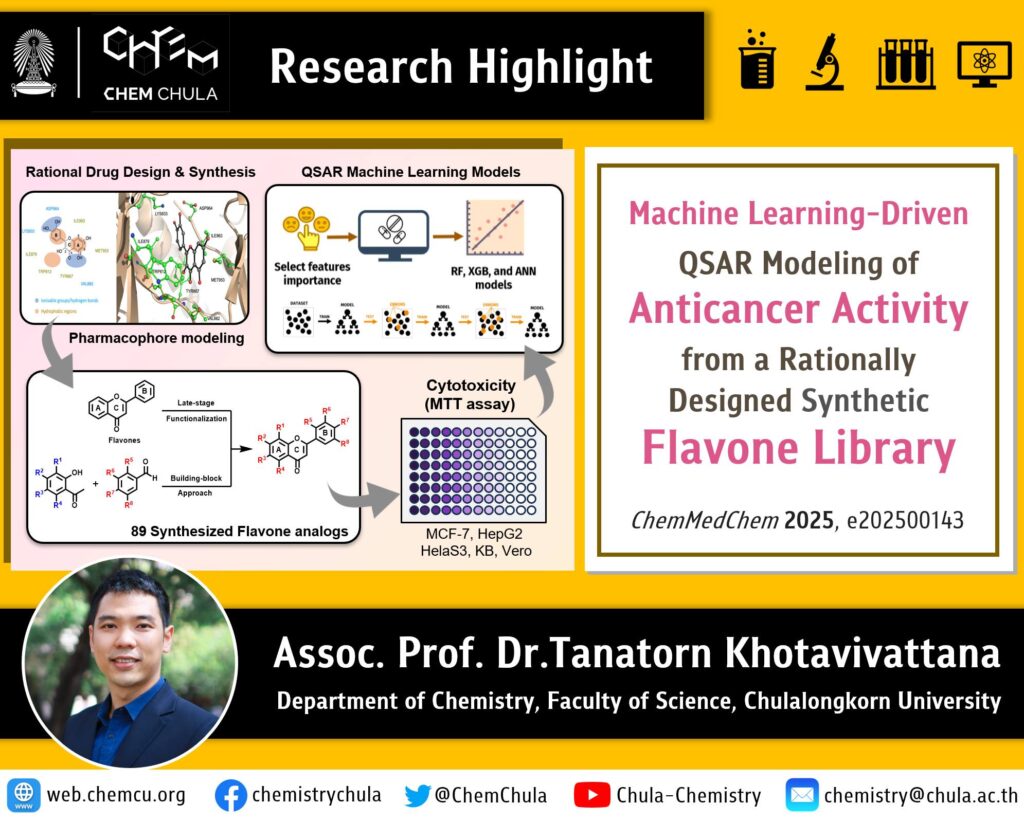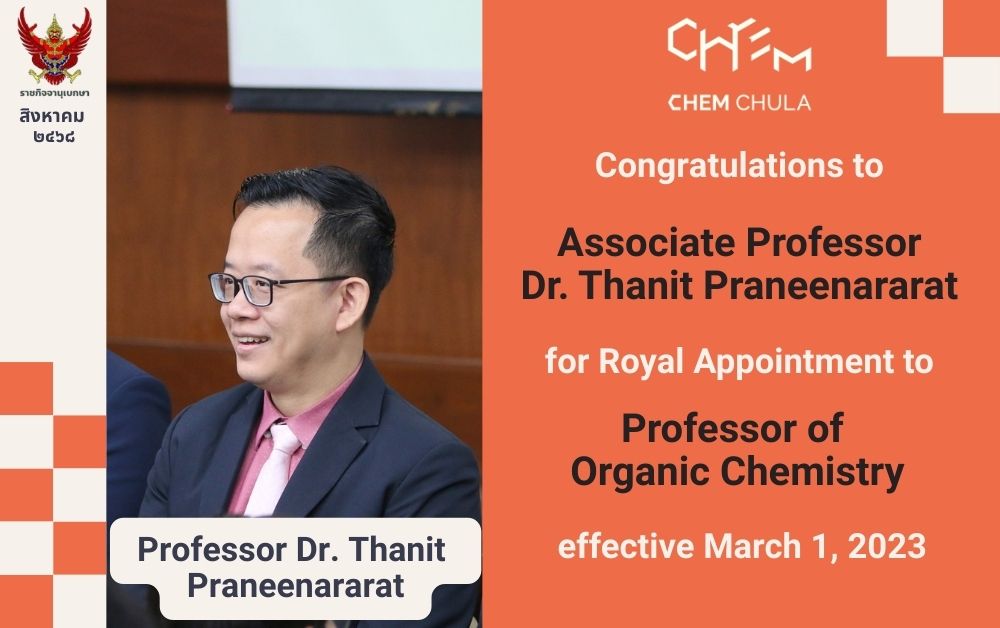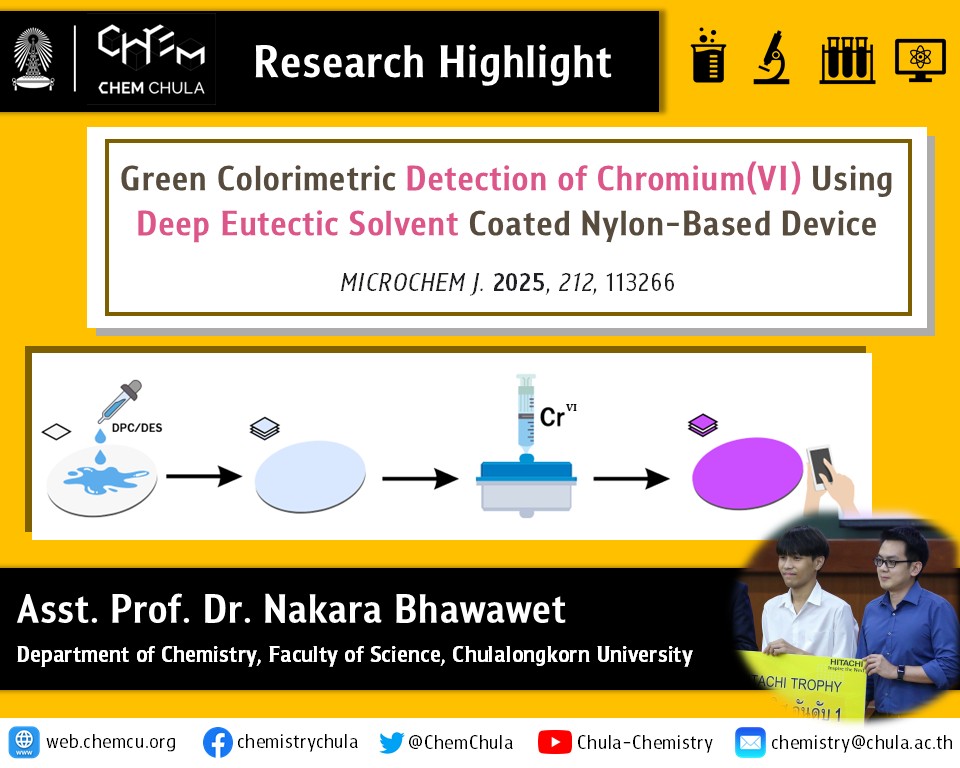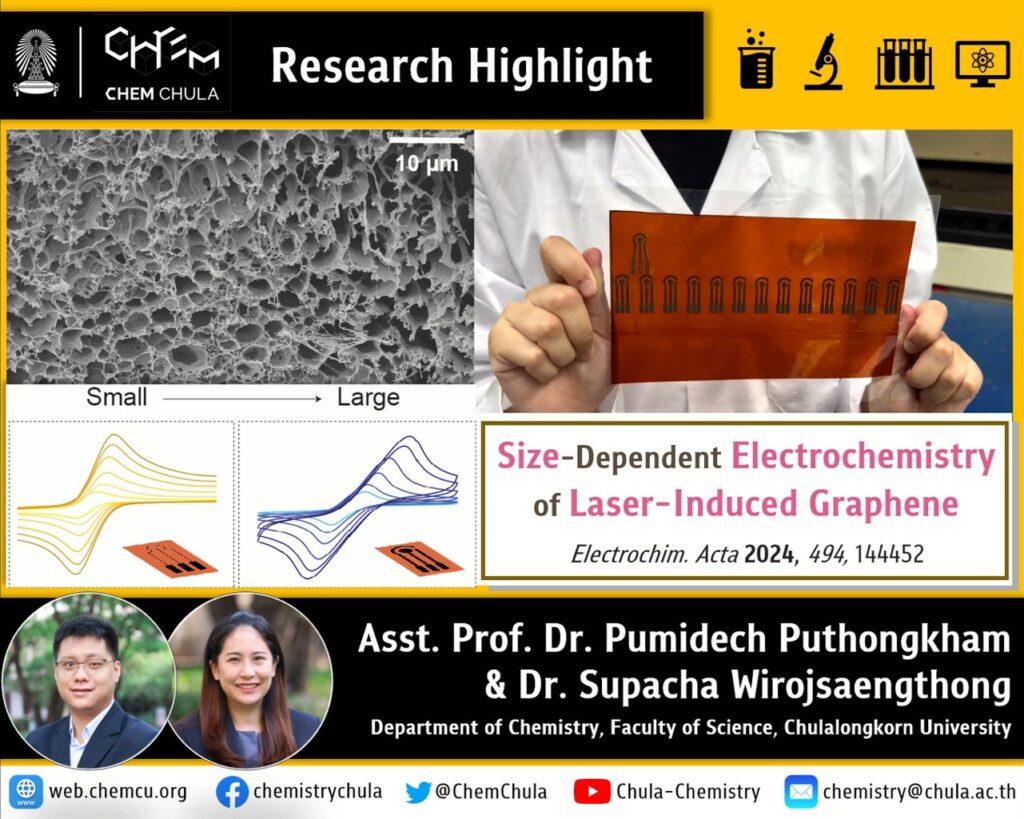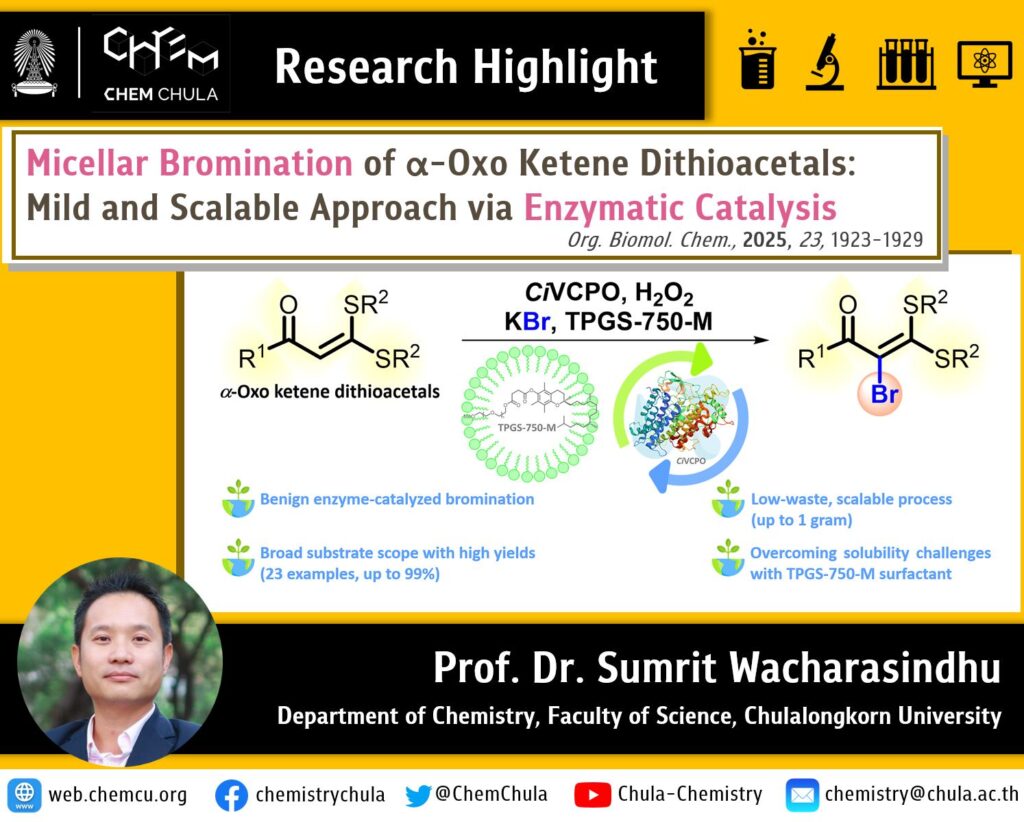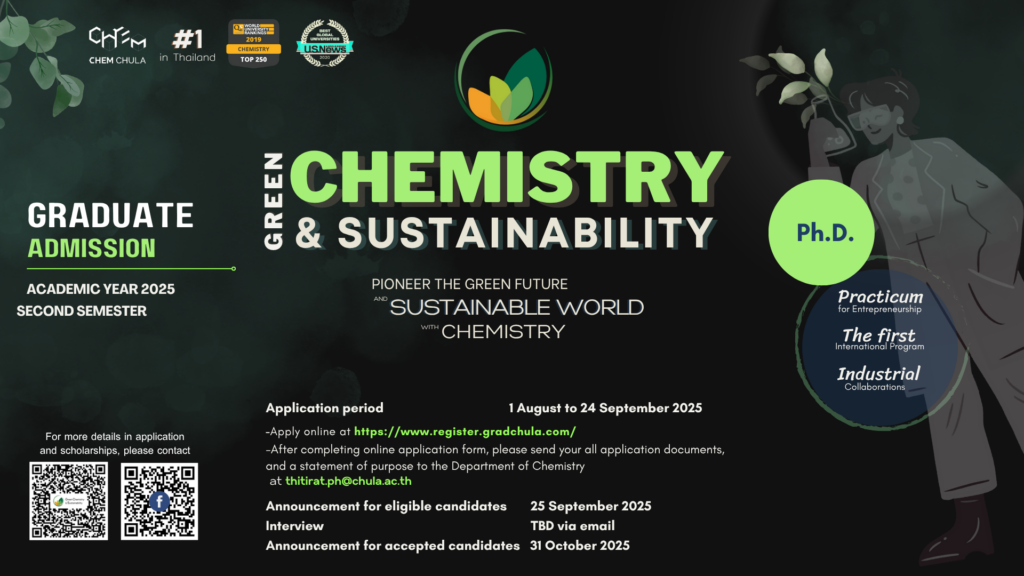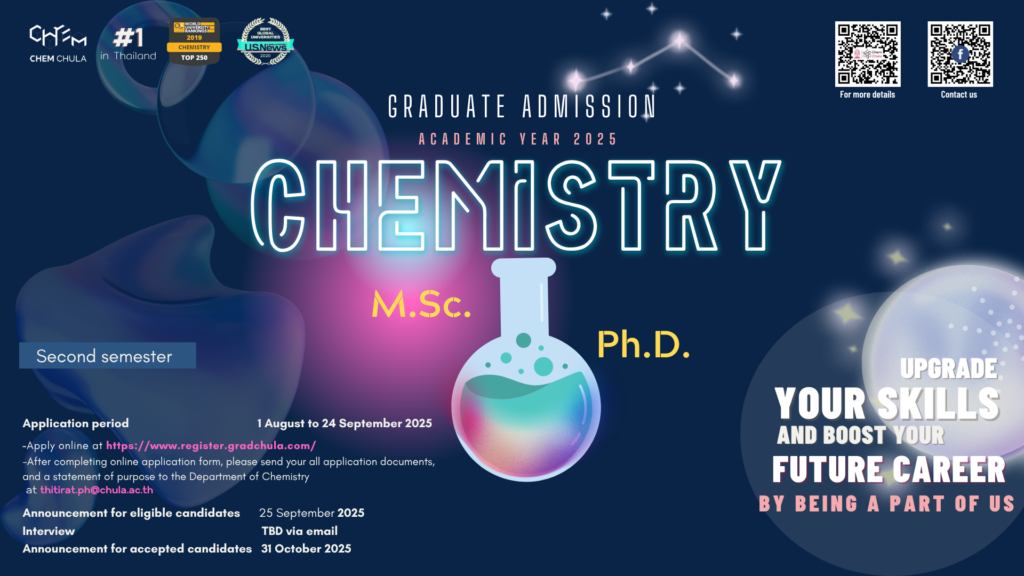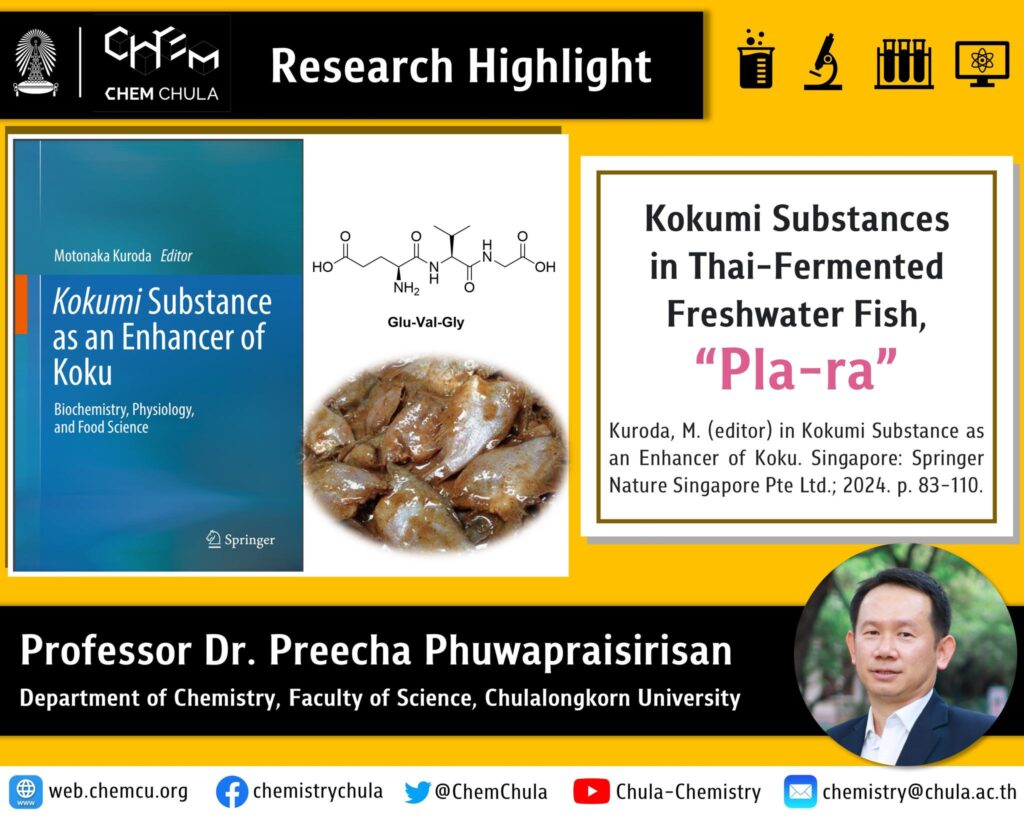Training AI to Predict Anticancer Activity from Rationally Designed Flavones
As artificial intelligence (AI) continues to transform medicine and pharmaceuticals, its role in accelerating the discovery of bioactive compounds is becoming increasingly crucial. A research team led by Assoc. Prof. Dr. Tanatorn Khotavivattana from the Department of Chemistry, Faculty of Science, Chulalongkorn University, in collaboration with experts from multiple institutions, designed and synthesized 89 flavone derivatives, …
Training AI to Predict Anticancer Activity from Rationally Designed Flavones Read More »

